Log Cabins – The Seven Dimensions
I have known some potential customers to have some confusion when referring to measurements of log cabins and this post will help to make it clearer, also, if you are looking at other suppliers generally they will use the same ones so this may help when looking at other options as well.
Please note though I have found a couple of UK companies measure from the roof overhang so it is worth clarifying this point if you are buying elsewhere.
There are Seven measurements of log cabins that you will be interested in and these dimensions are referred to as:
- Log
- Interlock
- Foot print
- Roof
- Canopy
- Log Thickness
- Internal
I am going to use the example of a 4m x 4m log cabin.`
Log Dimensions
Our dimensions refer to the fullest extent of the wall logs, for instance this will be the configuration of a listed 4m x 4m log cabin such as the >Jari 4x4m Log Cabin
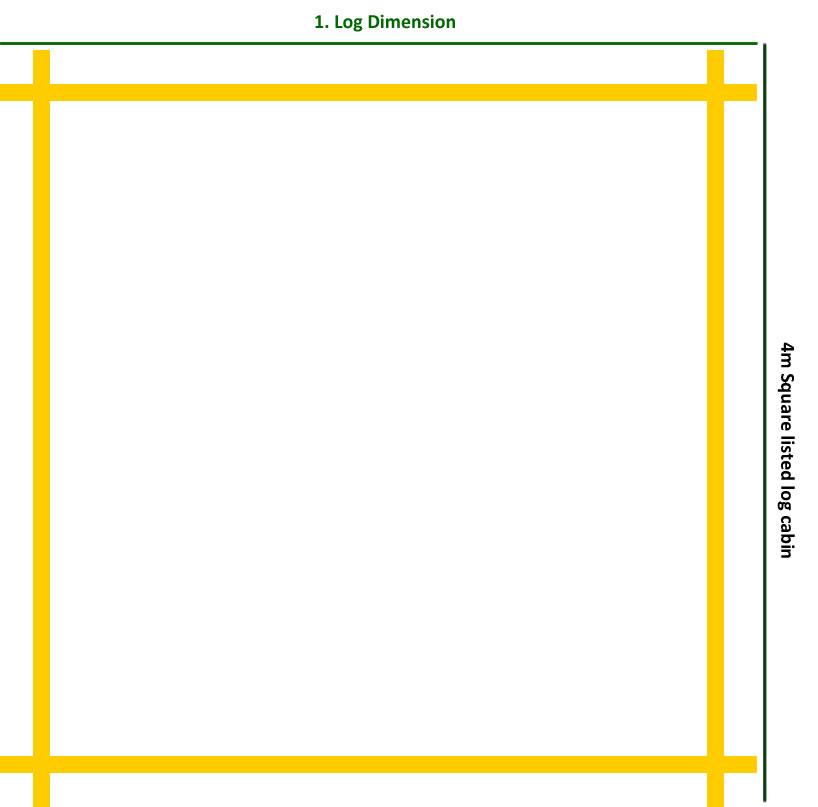
4m x 4m log cabin. The log dimensions are to the furthest extent of the logs that form the main building excluding canopies or roof overhangs. This will include a veranda.
The log dimension does not include any roof overhangs or canopy dimensions. This is the measurement of the base log that forms part of the ground plan of the building, this will not include the canopy but will include the veranda if one is featured.
Corner Interlock
Due to the construction of a log cabin we must have a corner interlocking joint. This has to be set away from the end of the log and sufficiently far enough to maintain strength and aesthetics. On most occasions this is 100mm but some cabins we do make it very slightly smaller. Generally with the 19mm buildings and some corner building to keep internal space to a maximum. Check the product pages for this.
For this post and to enable understanding, and as 98% of our buildings are 100mm, we will stick with this example. This is the interlock dimension:
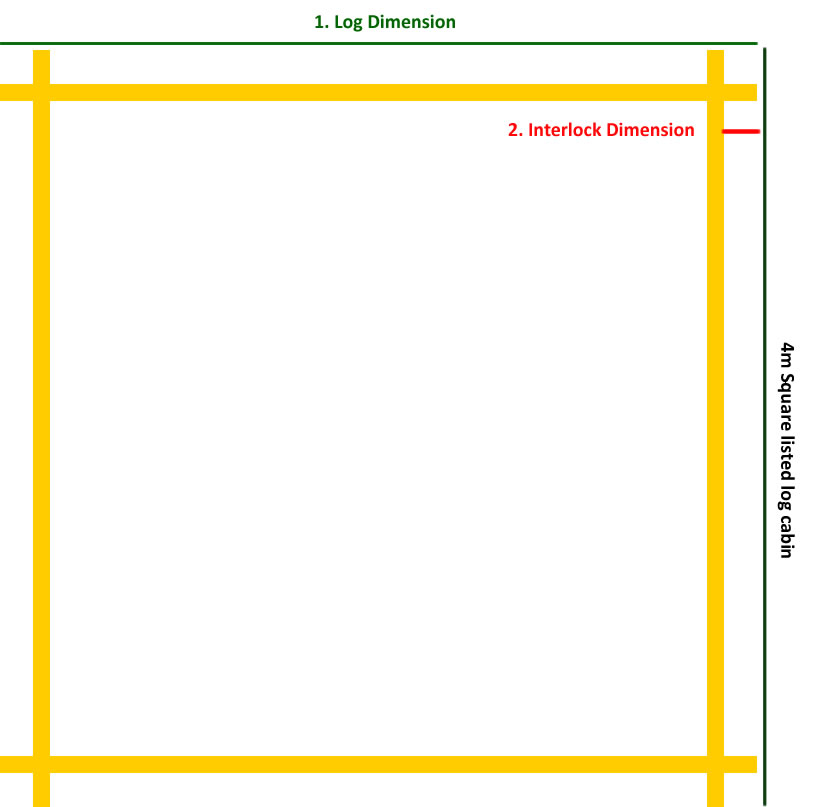
Interlock dimension – This is the measurement from the outside of the log to the outside face of the base log which forms the footprint.
Footprint of a log cabin
This is quite important especially when you are looking at your base. This refers to the very minimum your base can be and is the measurement required to support your wall logs properly. A base can be bigger than this but never smaller. The footprint is calculated by:
Main Base Log (4000mm) – (Interlock (100mm) x 2) = Footprint
This is the footprint dimension:
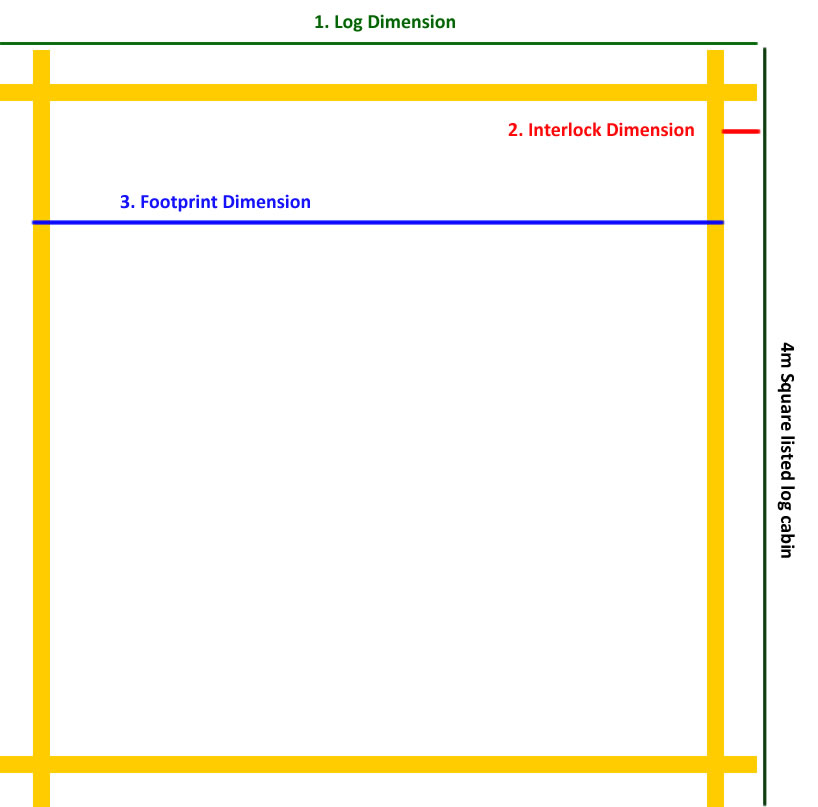
Footprint dimension – this is very important as it is the minimum dimension required for your base.
Log Cabin Roof Dimensions
This is the dimension of the roof and normally when we refer to it when asked, we state the ‘roof overhang’. This is generally 200mm – 300mm to the rear and sides on most log cabins.
If this is critical to you due to close proximity of a boundary you can happily cut this down to the full og dimensions. The roof overhang is there to protect the side walls, windows and doors from ingress of the weather. This measurement should be taken into consideration when calculating insulation or roofing material needed. Do not cut this down further than the log dimension.
Please Note: One or two suppliers list this as the cabin dimension. If you do not check you may end up with a log cabin smaller than you had expected.
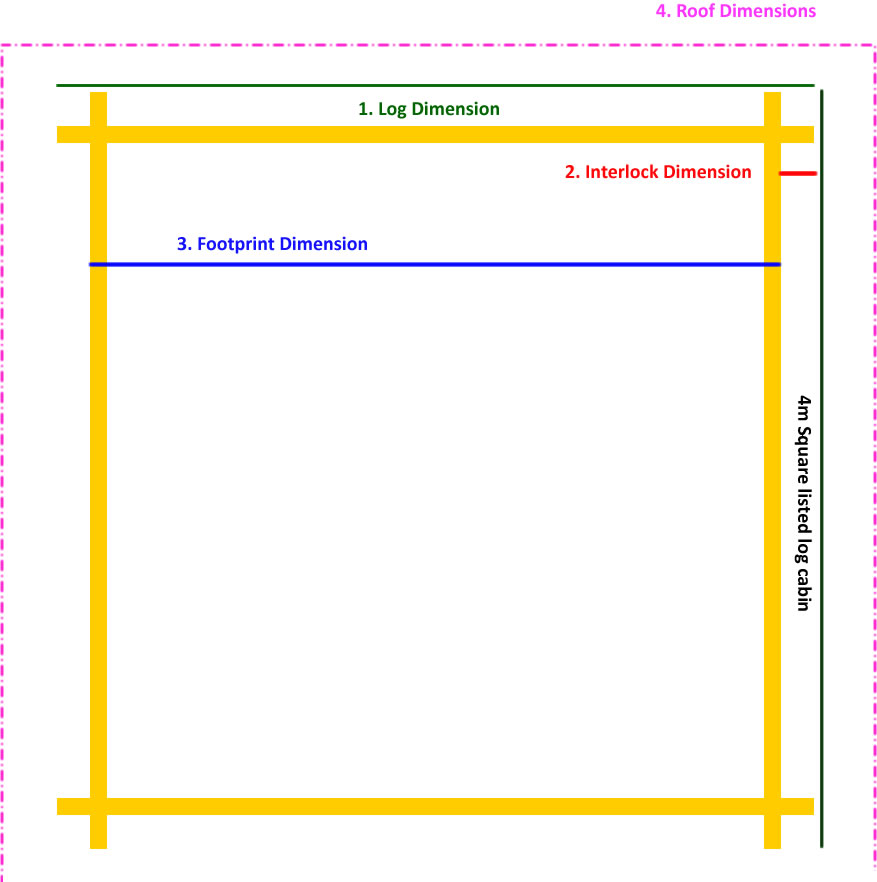
Log cabin roof ‘overhang’ dimensions. This is the amount that the roof boards overhang at the sides and to the rear of the main log cabin wall logs.
Canopy of a Log Cabin Dimensions
The canopy is always listed with us as an extra dimension, for instance our Stian 58mm 4m x 4m log cabin is listed as 4m x 4m but does have a 1.40m canopy. This is in addition to the mentioned 4m x 4m log dimension.
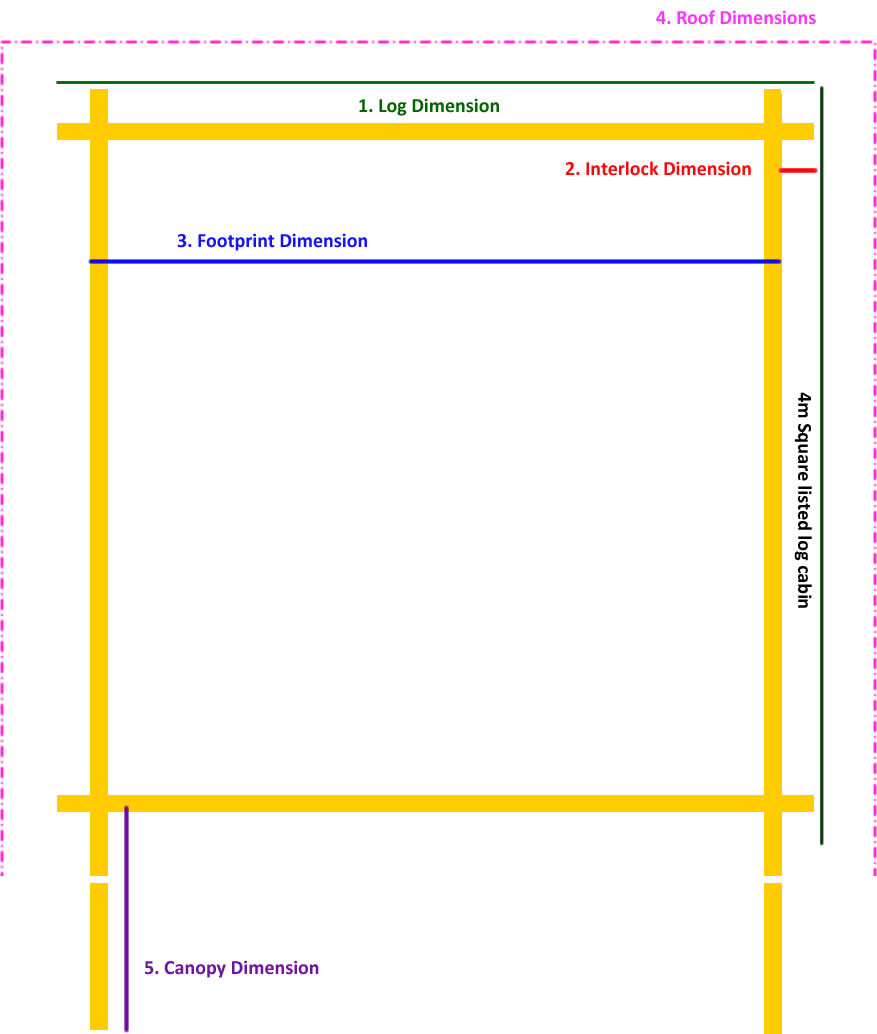
The canopy measurement is an additional measurement to the main log dimension.
Log Thickness
Log cabins that we, and others offer come in a variety of thicknesses. Please see our main categories which list these thicknesses: Tuin Log Cabins A log thickness you decide upon represents its intended use, for instance in my opinion the thicknesses can be classified as:
19mm log cabins are a storage solution to replace a shed far more economically and with a higher strength and longevity than a panelled shed.
28mm log cabins are a leisure building for use as a garden summerhouse or to enjoy the warmer months, it is not really for all year around use without adaptation.
34mm – 45mm log cabins are more as a studio and benefits from additional strength and heavy duty usage, these can also be added to with insulation and may work out very economical with some adaptation.
58mm cabins are for offices and accommodation and start to become a serious building for all year around uses with the addition of insulation in the roof and floor
The 70mm log cabins and above are for multiple rooms, strength and insulation properties.
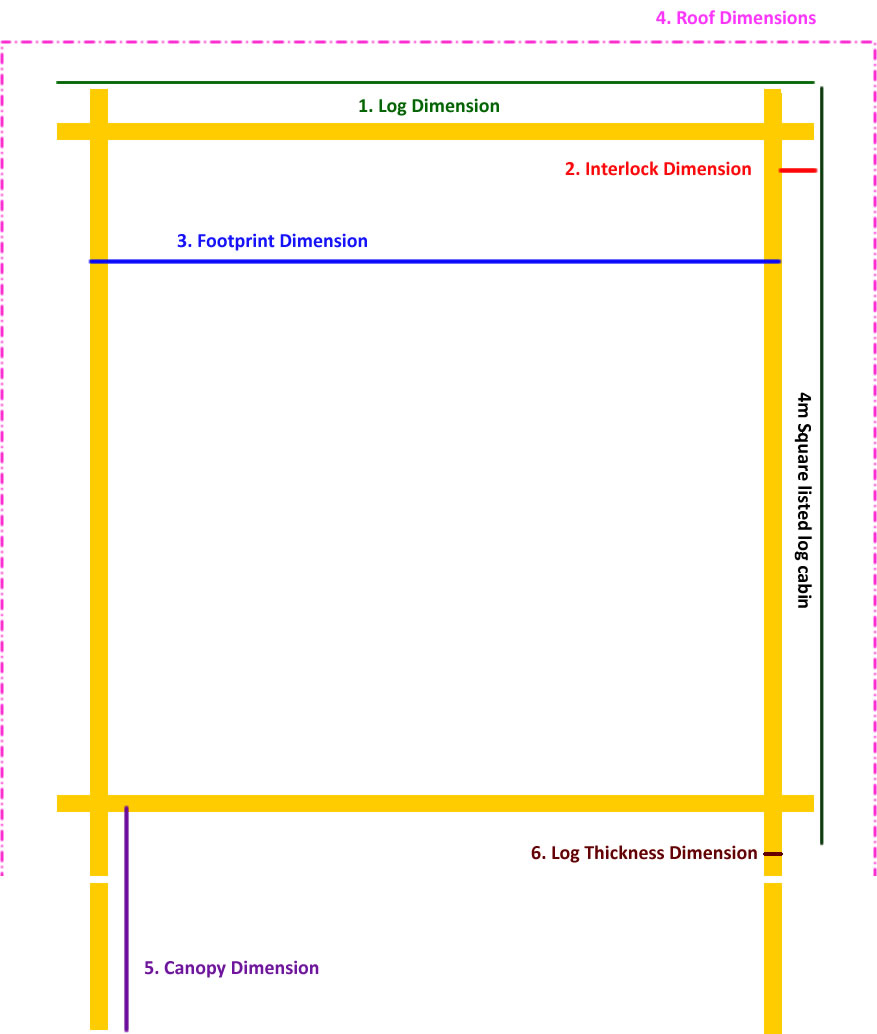
Log cabin wall thickness dimension – this is dependant on you and your requirements from you log cabin
Internal Log Cabin Dimensions
This, against the footprint dimension, is probably the most important dimension you are interested in. This represents the amount of room you have within your log cabin. Also, it’s made up of the following equation in this 4m x 4m example:
Footprint = Main Base Log (4000mm) – Interlock (100mm)
Internal Dimension = Footprint – (Log thickness x 2)
OR
Internal Dimensions = (Log – Interlock) – Thickness
This is a log cabins internal dimension:
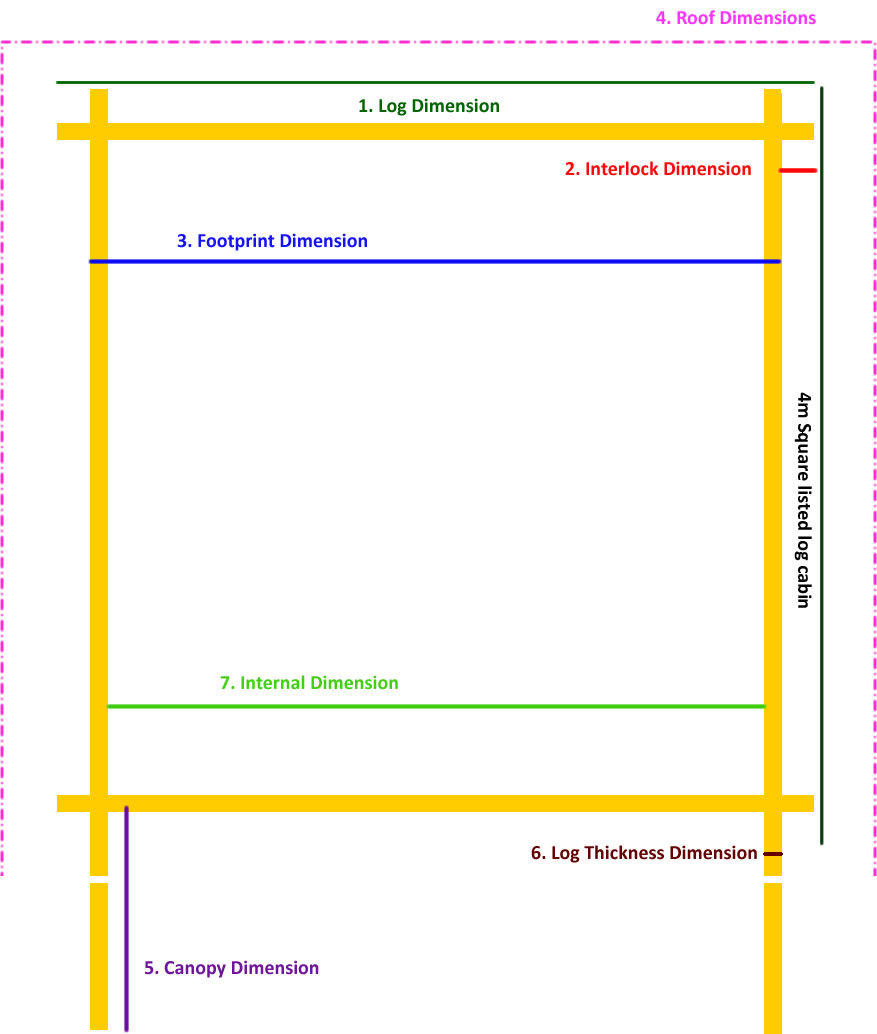
A log cabins internal dimension
So, if we look at the following examples the internal dimensions are:
- Palma Log Cabin 4m x 4m in 34mm logs – (4000 -200mm) – 34mm either side = 3732mm
- Lotte Corner Log Cabin 4m x 4m in 45mm logs- (4000 – 200mm) – 45mm either side = 3710mm
- Stian 4m x 4m in 58mm logs – (4000 – 200mm) – 58mm either side = 3684mm
Measurements of Log Cabins Summary
As I have mentioned above, these are the measurements of log cabins, others will do the same but it is a good idea to check with your supplier if you are not buying one of our log cabins






Should not the footprint be the log dimension minus 2x interlock dimension ?
You are correct, it is the full length of the log less the corner interlocks both sides.
This is an excellent clear explanation of sizing for constructing bases . Makes your competitors look like amateurs.